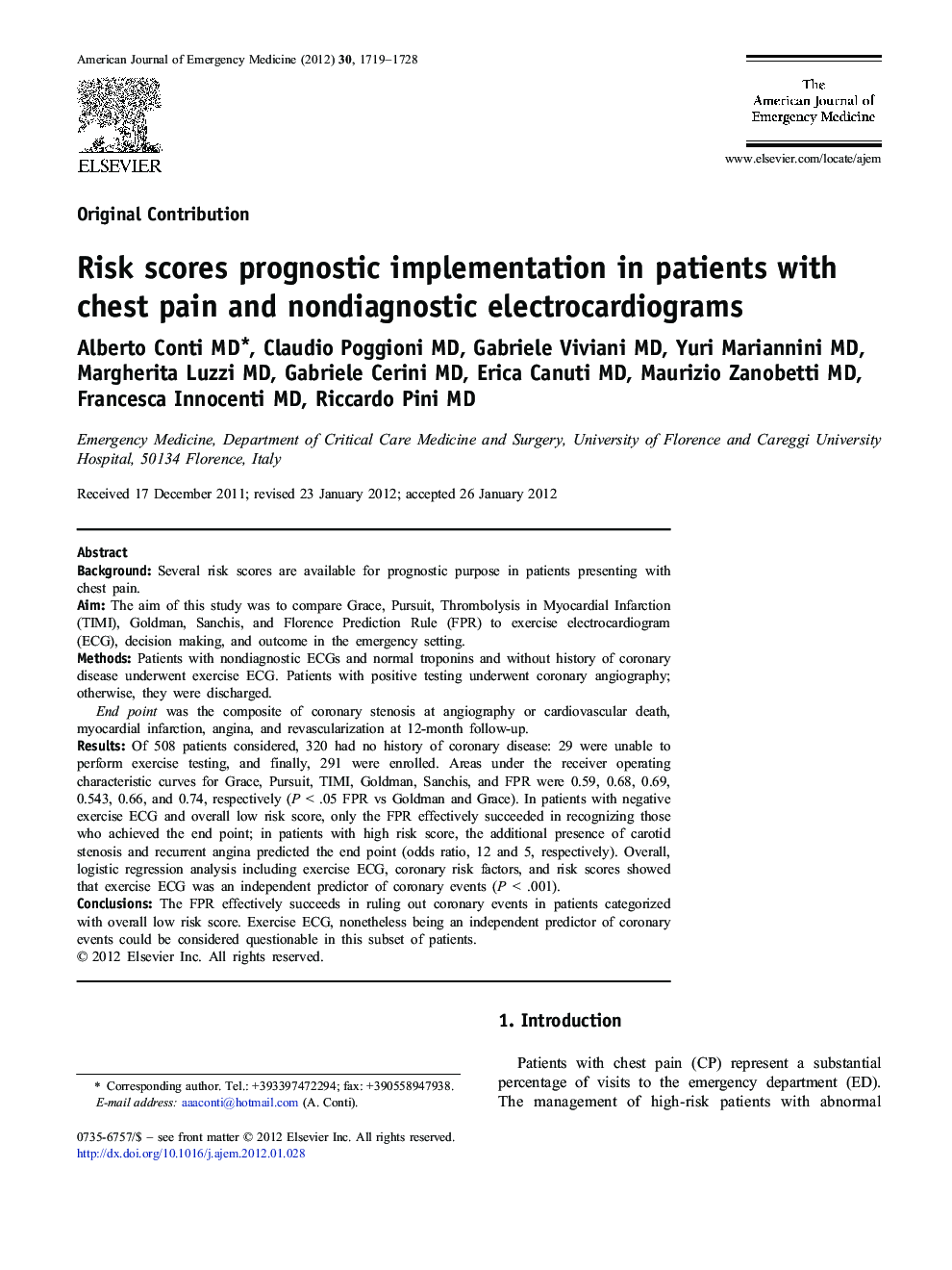| کد مقاله | کد نشریه | سال انتشار | مقاله انگلیسی | نسخه تمام متن |
|---|---|---|---|---|
| 3224886 | 1588135 | 2012 | 10 صفحه PDF | دانلود رایگان |

BackgroundSeveral risk scores are available for prognostic purpose in patients presenting with chest pain.AimThe aim of this study was to compare Grace, Pursuit, Thrombolysis in Myocardial Infarction (TIMI), Goldman, Sanchis, and Florence Prediction Rule (FPR) to exercise electrocardiogram (ECG), decision making, and outcome in the emergency setting.MethodsPatients with nondiagnostic ECGs and normal troponins and without history of coronary disease underwent exercise ECG. Patients with positive testing underwent coronary angiography; otherwise, they were discharged.End point was the composite of coronary stenosis at angiography or cardiovascular death, myocardial infarction, angina, and revascularization at 12-month follow-up.ResultsOf 508 patients considered, 320 had no history of coronary disease: 29 were unable to perform exercise testing, and finally, 291 were enrolled. Areas under the receiver operating characteristic curves for Grace, Pursuit, TIMI, Goldman, Sanchis, and FPR were 0.59, 0.68, 0.69, 0.543, 0.66, and 0.74, respectively (P < .05 FPR vs Goldman and Grace). In patients with negative exercise ECG and overall low risk score, only the FPR effectively succeeded in recognizing those who achieved the end point; in patients with high risk score, the additional presence of carotid stenosis and recurrent angina predicted the end point (odds ratio, 12 and 5, respectively). Overall, logistic regression analysis including exercise ECG, coronary risk factors, and risk scores showed that exercise ECG was an independent predictor of coronary events (P < .001).ConclusionsThe FPR effectively succeeds in ruling out coronary events in patients categorized with overall low risk score. Exercise ECG, nonetheless being an independent predictor of coronary events could be considered questionable in this subset of patients.
Journal: The American Journal of Emergency Medicine - Volume 30, Issue 9, November 2012, Pages 1719–1728